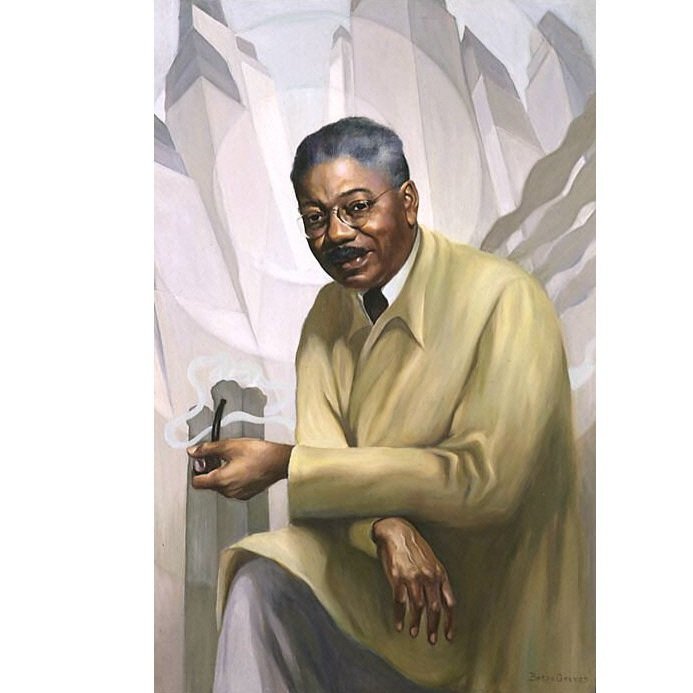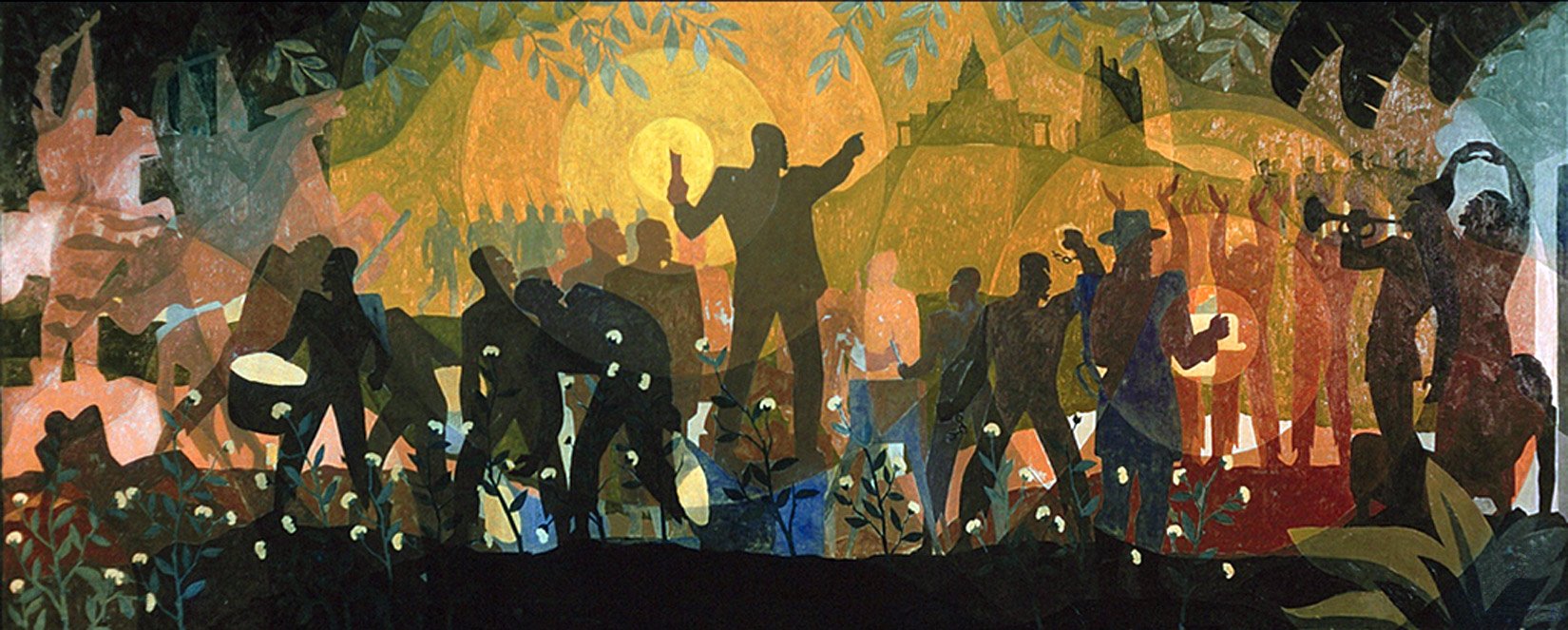Celebrating Black History Month: The Art of Aaron Douglas
"Let's bare our arms and plunge them deep through laughter, through pain, through sorrow, through hope, through disappointment, into the very depths of the souls of our people and drag forth material crude, rough, neglected. Then let's sing it, dance it, write it, paint it. Let's do the impossible. Let's create something transcendentally material, mystically objective. Earthy, Spiritually earthy. Dynamic."
-Aaron Douglas, in a letter to Langston Hughes, dated Dec. 21, 1925
Betsy Graves Reyneau, Aaron Douglas, 1953, National Portrait Gallery,
Smithsonian Institution
Aaron Douglas (1899-1979), a significant African American figure in the Harlem Renaissance, was a Renaissance man, painter, illustrator, visual arts educator, and philosopher. New York's Harlem Renaissance of the 1920s and 30s was the focus of black intellectual and cultural activity. At the same time, in post-WWI Paris, avant-garde artists collected African objets d'art and enjoyed dance, music, and theatrical performances by black artists. There was a cross-pollination between Parisian Negrophilia and the Harlem Renaissance. By combining Western aesthetics with ancient African traditional art, Aaron Douglas pioneered African-American Modernism.
Aaron Douglas, Building More Stately Mansions,1944, RISD Museum
Douglas’ path to Harlem was circuitous. He was born and raised in Topeka, Kansas, where his father was a baker and his mother a homemaker who painted watercolors. After finishing high school, he wanted to attend college but lacked the funds. He moved to Detroit and worked in the Cadillac plant while attending free art classes at the Detroit Museum of Art. In 1922, Douglas graduated from the University of Nebraska with a degree in Fine Arts financed by busboy earnings. He secured his first visual arts teaching position at Lincoln High School in Kansas City, Missouri, staying there until 1925. Dreaming of an art career in Paris, he traveled to Harlem.
Aaron Douglas: Aspects of Negro Life: From Slavery Through Reconstruction, 1934, NYPL
Harlem's thriving African American art scene immediately drew Douglas in, and he remained, becoming friends with writer Langston Hughes and activist W.E.B. Du Bois. He studied with the German Modernist Winold Reiss, who encouraged him to incorporate his African heritage into his art. Douglas soon earned commissions illustrating for the civil rights publications The Crisis and Opportunity, leading to work in Harpers and Vanity Fair magazines. It was his panel series of four murals that brought him national recognition. Aspects of Negro Life, painted in 1934 for the New York Public Library, depicts the emergence of Black America.
Considered "the father of Black American art," Douglas promoted young African American artists through his presidency at the Harlem Artists Guild and by heading the art department of Fisk University in Nashville, Tennessee, until his retirement in 1966. Even after retirement, Douglas continued to paint and lecture until he died in 1979.




